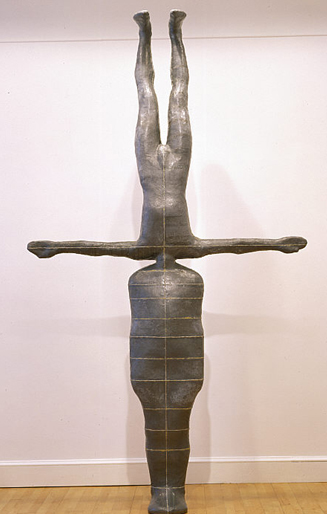ANTONY Gormley's sculptures are, among other things, remarkable exercises in self-restraint. His working methods are unusual to say the least, going something like this. Step One: the artist, naked, winds himself in several yards of clingfilm. Step Two: his wife coats him thickly in liquid plaster. Step Three: he remains motionless; it dries. Step Four: his wife cuts him out of his plaster casing, which then becomes the basis for a sculpture in lead or, occasionally, cast iron. Self-mummification has its hazards: on one occasion, Gormley has recalled, he teetered over while imprisoned in drying plaster and was saved from crashing to the floor of his studio only by a fortuitously placed work-bench.
Several of Gormley's statuesque alter-egos are currently to be found in the Scottish National Gallery of Modern Art in Edinburgh. Standing, kneeling, lying or just plain sitting tenants, his figures strike basic poses, take up the sort of positions any person might, anywhere. The casting process, which blurs Gormley's features into anonymity, so that he is as unrecognisable in his art as he might be in a balaclava, heightens the Everyman effect (they can also look disconcertingly like androids). These are not, it is plain, intended as self-portraits, but as images of Man.
Facing each other across 50 yards-plus of corridor provided by the museum's axial groundplan you find Earth Above Ground, a figure which gazes upwards in a pose of exaggerated expectancy, and Hold, a figure slouched in a squatting position, hands over bowed head. They invite emblematic reading - Despair and Transcendence? Prayer and Enlightenment? - but never quite capitulate to interpretation.
Searching for ways to elucidate what his art suggests is something like the Human Condition, Gormley often resorts to tactics very like those of mime, an art form which expresses a similar faith...


